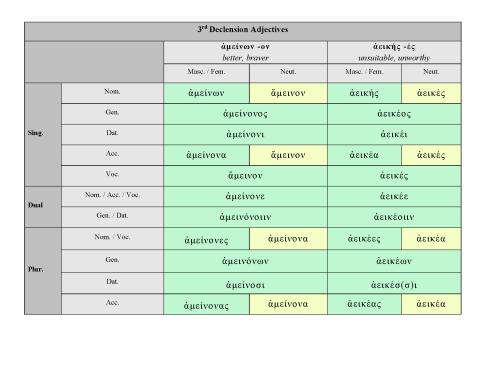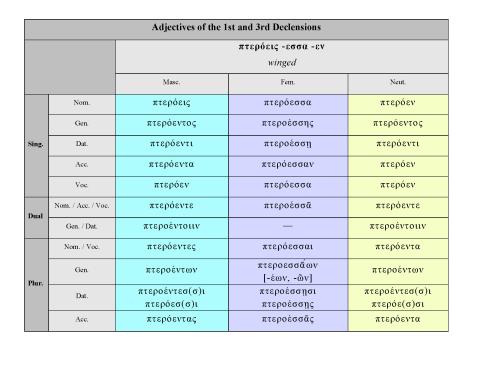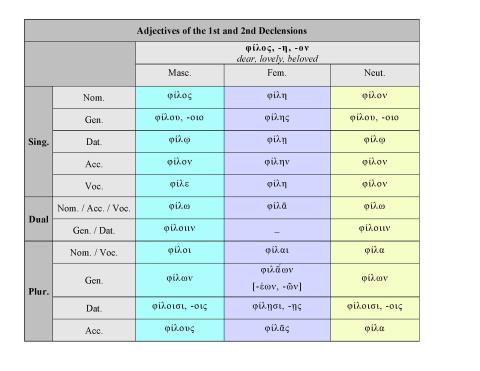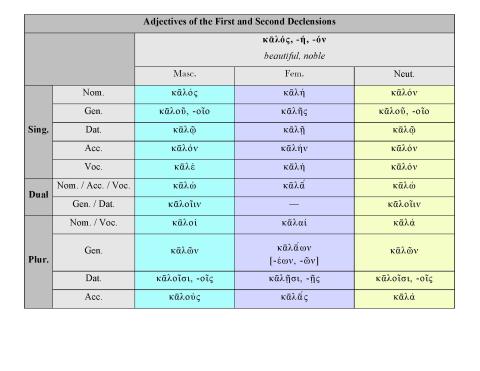Homeric adjectives: ἀμείνων and ἀεικής
Annotations
Seth Levin and Meagan Ayer created these charts based on Clyde Pharr's Homeric Greek: A Book for Beginners (Boston: D.C. Heath, 1920). Since they have a pedagogical rather than descriptive-grammatical purpose, they sometimes include, to complete a paradigm, forms that do not in fact occur in Homeric Greek. Lemma searches in Perseus under Philologic can clarfy what forms are actually found in the Homeric poems (and how commonly).





Superlatives (as ἄριστος, η, ον), participles in ος, η, ον, and all words that have these three endings in the nominative singular are similarly declined.
The feminine of adjectives of the first and second declensions regularly ends in -η, and is declined as above; a few end in the -α, as δῖος -α, -ον, and are declined as θάλασσα
Adjectives of the second declension have only two endings (ος, ον), of which the first is both masculine and feminine, the second neuter. Most of these adjectives are compounds.
The masculine form of many adjectives is often used for both masculine and feminine, even in the case of those which have separate forms for the feminine.
Adjectives of the first and third declensions have a separate form for the feminine, which is declined like a noun in -α (θάλασσα) of the first declension.